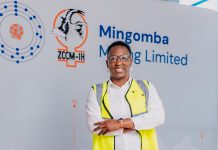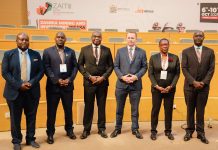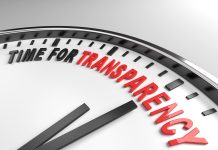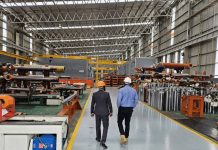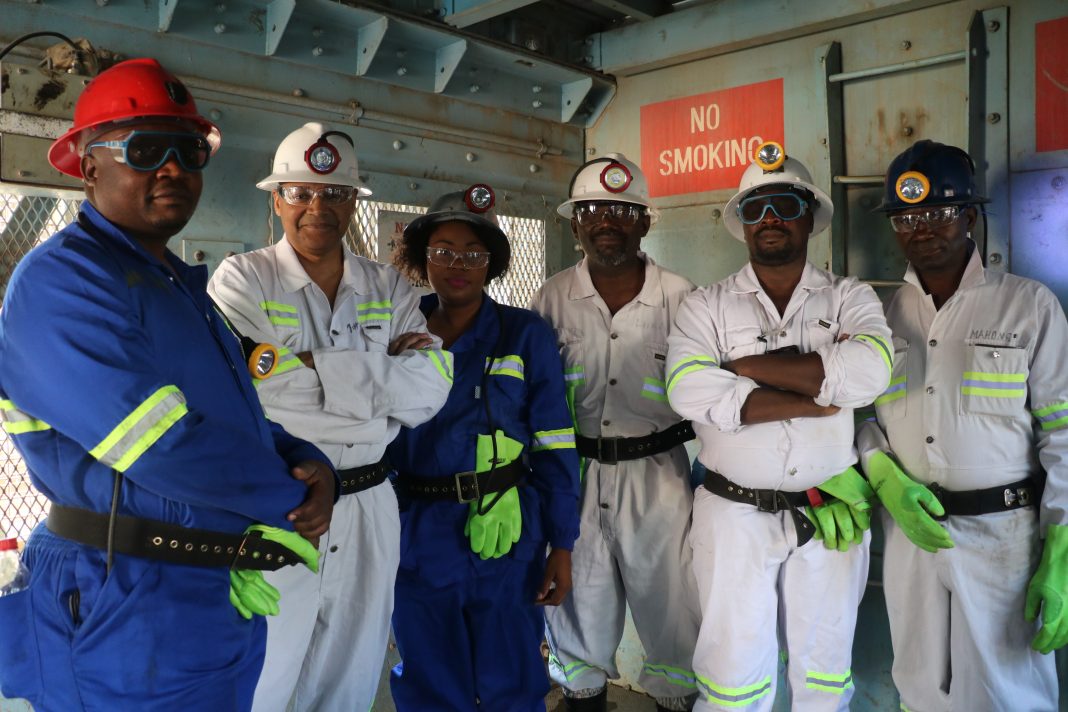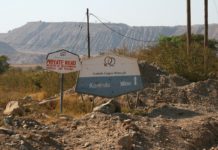Hard-hat; thick socks and water-proof boots; headlamp with 48 hours of battery life; emergency breathing pack with oxygen for up to 30 minutes; ear plugs; heat-resistant gloves; safety goggles; overalls – it’s bit of a mission getting kitted up for an underground mine visit.
There are seven of us. By the time we’re all finally ready, each of us is weighed down by a serious amount of equipment, all designed to keep us safe.
“What an ordeal!” I say to Judith, who only half an hour earlier had been elegantly attired for the office in a pink-patterned summer blouse, a figure-hugging red skirt and a smart pair of heels. “It’s like getting dressed to go out for dinner.”
“Oh, no,” she says. “That would take much longer!”
Without electrical power, the mine would flood within an hour
The last thing we’re each given before setting out is a 750ml bottle of water to drink underground – a bit of an irony when one is about to descend into the world’s wettest mine.
We’re in the town of Chilabombwe on the Copperbelt. This is the site of Konkola Deep’s number 4-shaft, the flagship underground operation of Konkola Copper Mines (KCM), Zambia’s largest integrated copper producer – integrated meaning the company digs ore out of the ground at one end, produces finished copper at the other, and handles all the stages in between, including smelting and refining. We are dwarfed by the imposing steel structure of the headgear, which rises nearly 100 metres into the air and is the highest free-standing structure for miles around. The headgear and the shaft took nearly five years to build (2005 to 2010), and absorbed some $1 billion of investment capital from KCM and its main shareholder, the London-listed mining company Vedanta Resources Plc.
We emerge at the 950-metre level and step out into the semi-darkened train tunnel. This is a highly mechanised mine, and the rail tracks are there for the locomotives (both diesel-powered and electrically powered). They carry the ore – nearly half a million tonnes every month – to the primary crushers underground, before it is hoisted to the surface. The tunnels we are walking through are part of a network more than 3 km long, meandering in different directions and at different heights.There is silence in the elevator cage during the two-minute ride to the bottom. It is punctuated only by a warning from Daniel, the shaft superintendent, to keep our hands inside the cage at all times. We check that our headlamps are on.
Wherever we walk, the ground is wet and muddy to varying degrees. The waterproof boots were necessary after all. We soon see water issuing in small jets both from the roof and the side walls.
“Where is it coming from?” I ask.
“From the aquifers,” says Daniel. “They are all over this region and contain huge quantities of water.”
Aquifers are underground layers of water-bearing, permeable rock from which groundwater can be extracted. In recent years, aquifers containing mindbogglingly huge quantities of fresh water – measured in millions of cubic kilometres – have been discovered in the oceans off Australia, China, North American and South Africa. With water scarcity set to be one of the major environmental challenges of the 21st century, scientists are already discussing the possibility of drilling for water from the seabed, in much the same way as we currently drill for oil. So, sometime in the future, Zambia could well enjoy the fruits of a water bonanza.

For now, however, it is a headache. That’s because mining cannot take place underwater. To keep the mining areas dry, KCM pumps up to 450 million litres of water to the surface every day – the equivalent of 180 Olympic-sized swimming pools.
The water first passes through a series of special sumps for settling and sedimentation. By the time it is pumped to the surface, it is clean and clear. Some of it is recycled by the mine for operational purposes and some of it is supplied free of charge to the local water utility company. But the largest portion by far is discharged into the nearby Kafue River, playing a critical role in keeping water flowing to local communities in the dry season.
“It’s fair to say our water sustains the nearby Kafue River every year until the rains return,” says Sylvester, the engineering superintendent.
Keeping the mine dry is a major cost that makes every tonne of finished copper more expensive to produce. The massive underground pump stations at Konkola Deep consist of kilometres of piping, and dozens of pumps driven by powerful electric motors. Running all this electrical infrastructure is the single-biggest component – around 40% – of KCM’s power bill. And to guard against power outages, the mine operates a multimillion-dollar, 24MW diesel-generator back-up plant.
“If the pumps stopped running and there was no generator back-up, the mine would flood within an hour,” says Slyvester, “The water level would rise by about a metre every ten minutes.”
Should this nightmare scenario ever happen, emergency systems would kick in automatically to protect the pump stations, which are the heart of the mine. Watertight bulkhead doors made of solid steel would immediately swing into place, sealing off the pump area from the rest of the tunnel network, which would then be allowed to fill with water. Once the situation was stablised, the pumps would be switched on again and the mine would be drained of water and allowed to dry out. Production would then resume.
“If we were suddenly stuck down here, how long would we survive?” Judith asks.
Daniel works it out. “Well, our headlamps have forty-eight hours of battery life and there are six of us. So theoretically, we could share the light and last forty-eight times six hours.” However, this would depend on available oxygen. “Each of our oxygen packs is sufficient for only twenty to thirty minutes. We can share light, but we can’t share oxygen!”
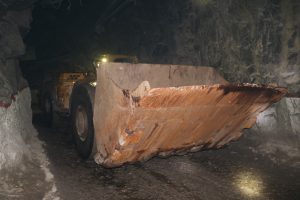
We carry on walking in the semi-darkness, besides the rail tracks, taking care not to slip on the wet, stony ground. One of the group lightens the mood with a profound comment: “Well, the one good thing about being underground like this is you know you won’t suddenly run into a lion!”
There is suddenly a deafening noise behind us. We turn and see the approaching lights of a locomotive. We quicken the pace and take refuge in one of the many mini-caves – known as refuge bays – that have been dug into the sides of the tunnel at strategic intervals. The locomotive clatters past in a deafening din, pulling nine wagons carrying a total of around 75 tonnes of ore.
A short while later, we’re on the wet, muddy road which winds down to the production area a few hundred metres below. Another noise – this time ominous, growling, threatening. It’s an LHD (Load-Haul-Dump), one of a fleet of low-slung, articulated vehicles that carry 20 tonnes of ore at a time from the blast areas. Huddled in a refuge bay, we watch the mechanical beast rumble past, its massive tyres churning up the mud, its powerful diesel engine screaming. The ground shakes from the noise and vibration, which we feel deep inside our chests.
By the time we’re back in the elevator cage heading for the surface, we work out that we’ve spent about three hours down below, and walked several kilometres. We emerge into the sunlight and head straight to the stores area to offload our emergency equipment; stripped of it, we feel unusually light – almost weightless.
The visit to Konkola Deep mine is a fascinating insight into the realities of modern-day mining. Producing copper from the earth is a complex, risky and costly process that brings together the best of human ingenuity in design, construction, materials and machinery. And that’s even before you’ve figured out how to deal with the water.
See also: Counting the kwacha








